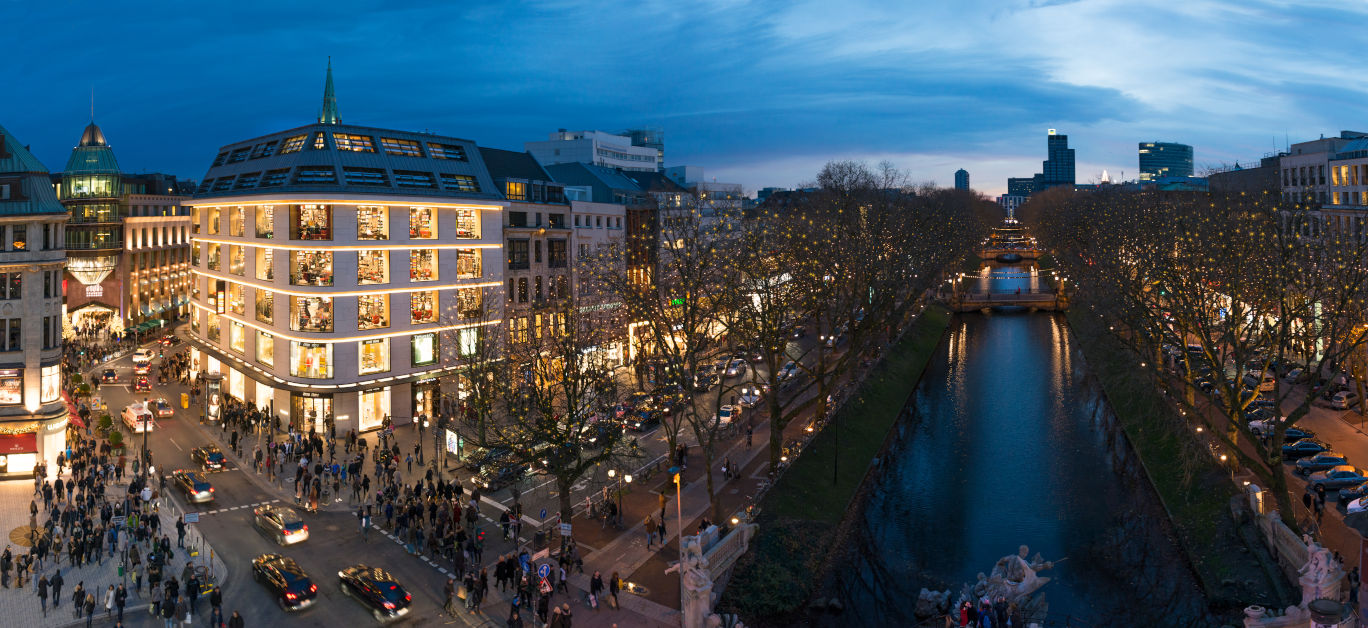Düsseldorf, the German capital of the North Rhine-Westphalia, lies at the junction of the mighty Rhine and the Düssel, where the original settlement of Dusseldorp was founded, with the earliest record with reference to Dusseldorp dating back to 1135.
The Holy Roman Emperor, Frederick I, was elected King of Germany in 1152 and his forces, based in Kaiserwerth, north of Düsseldorf, defended the Rhine from a strategic outpost. In 1186, Düsseldorf was ruled by the Counts of Berg and in 1288 the Battle of Cologne took place with the Archbishop of Cologne and the Count of Berg vying for control. Adolf VIII of Berg was victorious and he awarded town privileges to the village of Düssel.
In 1380, Düsseldorf was proclaimed the regional capital of the Duchy of Berg. The city suffered a decline during the Napoleonic Wars between 1803 and 1815 during which Napoleon declared Berg a Grand Duchy with Düsseldorf as its capital.
Following Napoleon’s defeat, Berg and the Rhineland were declared part of the Kingdom of Prussia. As a result of the Industrial Revolution, Düsseldorf prospered but again experienced decline due to strategic bombing during WWI and again in WWII. In 1946, the new federal state of North Rhine-Westphalia proclaimed Düsseldorf the capital and the reconstruction of the city began in earnest.
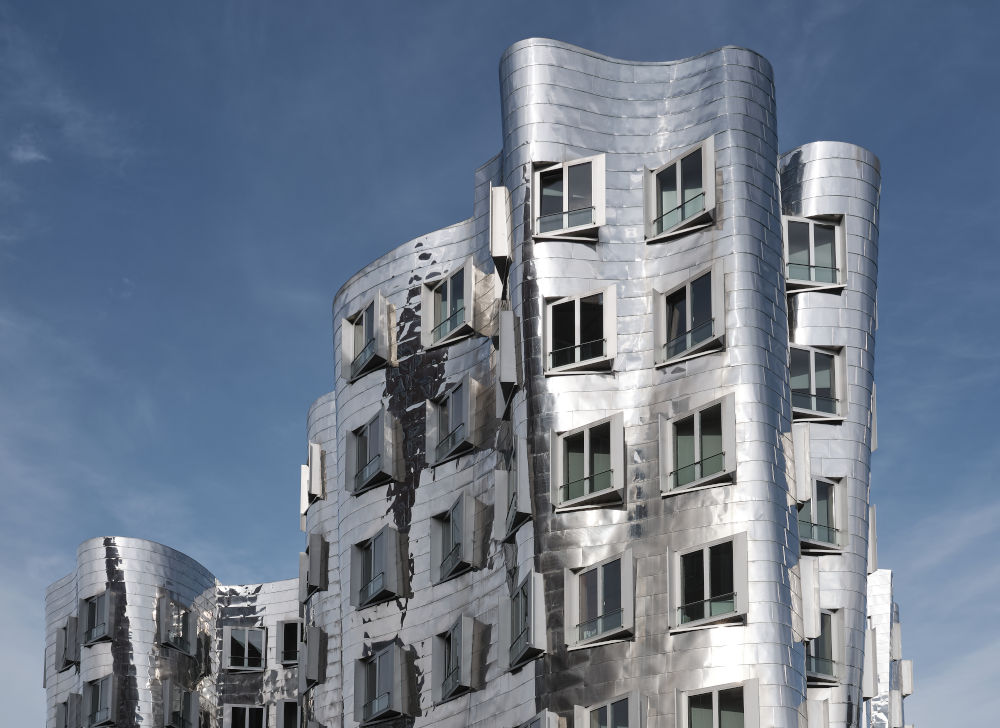
Today, Düsseldorf is one of Germany’s wealthiest cities and an important telecommunications and financial hub. This impressive metropolis reflects modern examples of architecture, a flourishing art scene and a vibrant nightlife.
For a bird’s eye view of the city I headed to the Rhine Tower, which was built between 1979 and 1982, and is Düsseldorf’s tallest structure, soaring up to 240 metres. The tower features QOMO, a modern Japanese restaurant, which rotates every 72 minutes, and a viewing platform at 168 metres, where I made my way to the bar to sip on a chilled gin fizz while admiring the stunning views of MedienHafen, Hofgarten, Alstadt, Königsallee and, of course, the Rhine.
Back on terra firma, I made my way to Altstadt, the city’s ‘old town’, which offers more than 260 bars and pubs and the world’s longest bar. Düsseldorf’s tradition of brewing dates back to the Roman age and ‘Alt’ relates to the brewing style of Altbier. I spotted several long, wooden tables where local people were gathering and I decided to join them. I ordered a glass of Altbeir, which has a wonderful fragrance of spices. Welcomed by my fellow patrons I was invited to join them on their journey from one bar to another.
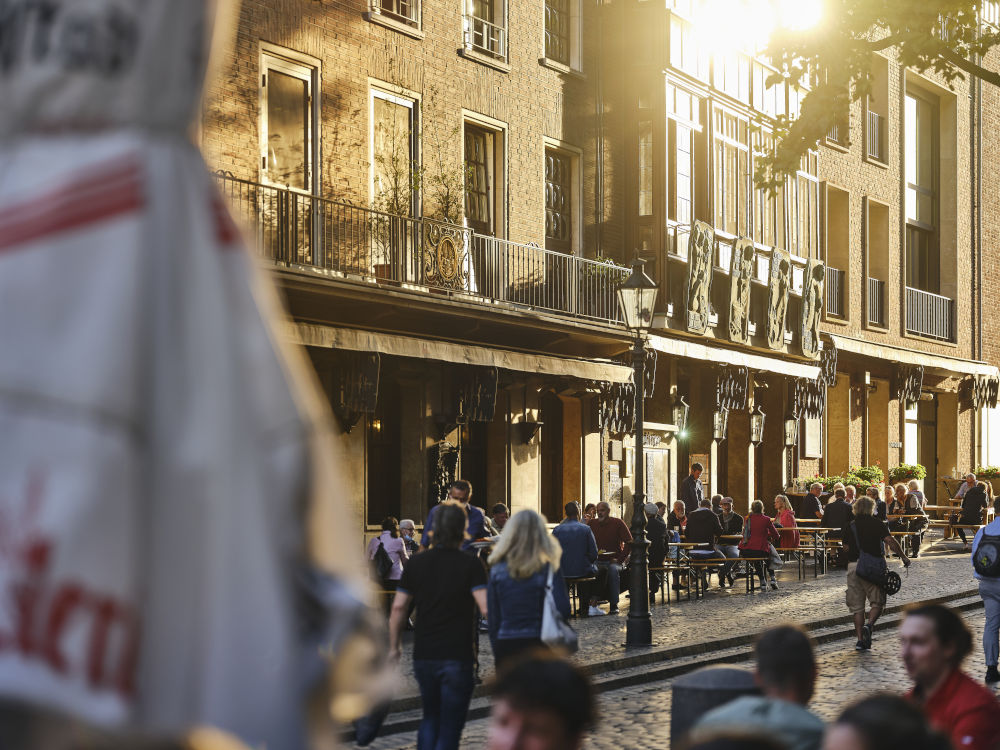
Alas, pressed for time, I reluctantly left and headed to MedienHafen, an area which houses numerous media and communication corporations, and fashion, architecture, art, and culture businesses. Strolling around at leisure, I was particularly impressed with the Stadttor; a steel and glass structure, which is considered to be the city gate, and the Gehry buildings; high rises with tilted walls and inclining towers, built in 1999.
I then embarked on a stroll around Burgplatz, the cobblestone square which links the old town and the banks of the Rhine. The Burgplatz features an imposing castle tower; a remnant of a baroque castle, which was built in the 16th century and today houses the Maritime Museum. Exhibits include shipbuilding history and trade and travel linked to the Rhine.
I then made my way to the tree-lined Königsallee, the widest boulevard in Germany, which features four walkways and a wide choice of luxurious shops including Dior, Prada, Chanel and Gucci. I could sense that my credit card balance was under threat and decided to retreat to the comfort of a local hotel.
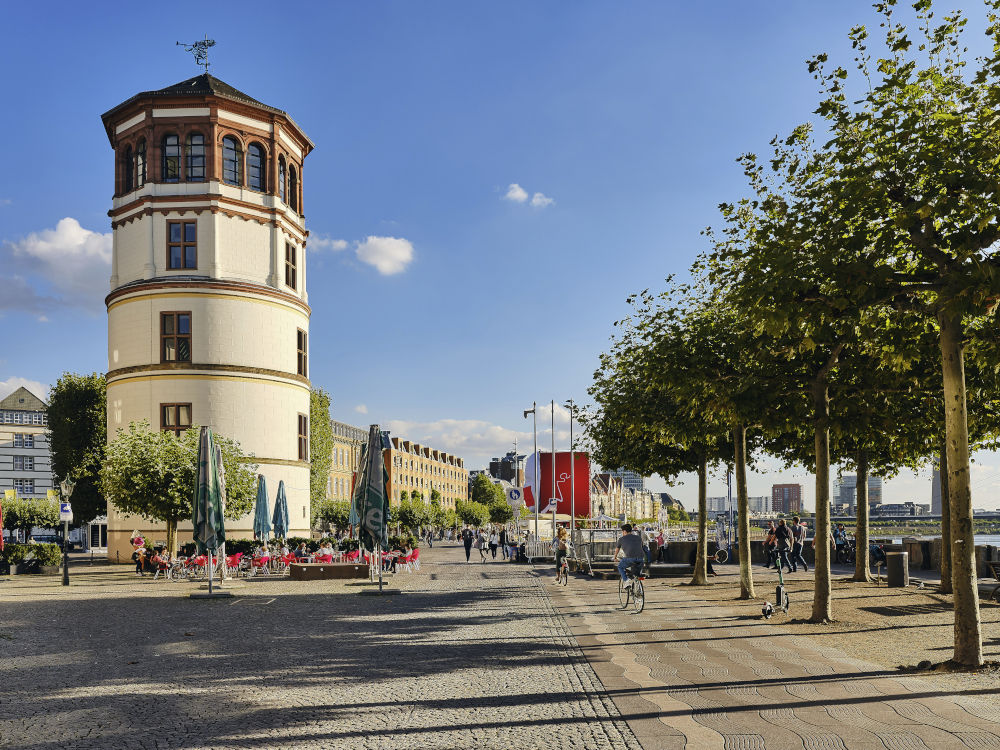
I was most fortunate to spot the Breidenbacher Hof, situated on Königsallee. The check-in procedure was warm and efficient and I was swiftly escorted to the Duchy Suite, which measures 79 square metres and consists of a spacious, classically furnished living room and a separate bedroom with the most comfortable extra large bed swathed in crisp, white linens.
Following a soothing soak in the Jacuzzi/bath and an extensive cat-nap, I headed off to the sumptuously furnished lobby bar and, sinking into a plump velvet chair, I ordered the delicious lobster soup, followed by the succulent salmon sashimi accompanied by a chilled glass of bubbly, which were served with aplomb.
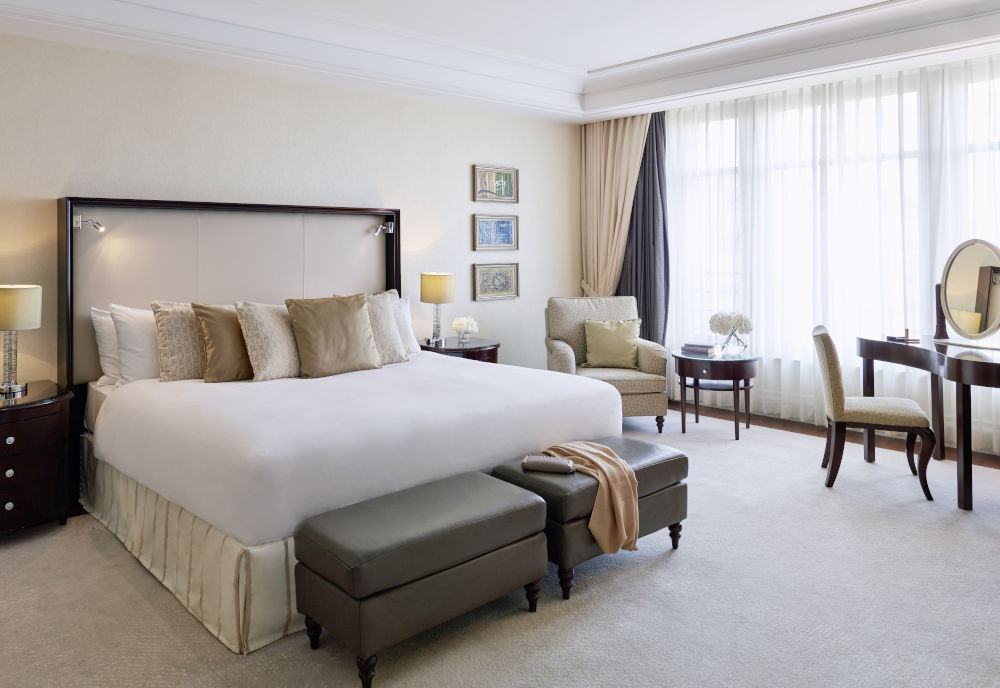
Up with the larks, and after indulging in an extravagant breakfast, I took a leisurely stroll along to the Hofgarten, which covers twenty eight hectares and features an impressive collection of trees and plants including magnolia, chestnut, hop beech, amber, trumpet and red maple, shrub plantations and perennials. The floral displays are wonderful and the intoxicating fragrances hanging in the air add to the overall experience.
For those of us with an insatiable thirst for art, a visit to the Kunstsammlung Museum is a must. The collections are housed in K20, located on Grabbeplatz, which focuses on the 20th century and K21, located on Ständehaus, which focuses on international modern art. K20 displays works by Paul Klee and focuses on surrealism, Dadaism, and expressionism. I was particularly drawn to the masters; Matisse, Picasso, Dali, Magritte, Max Ernst and Francis Bacon.
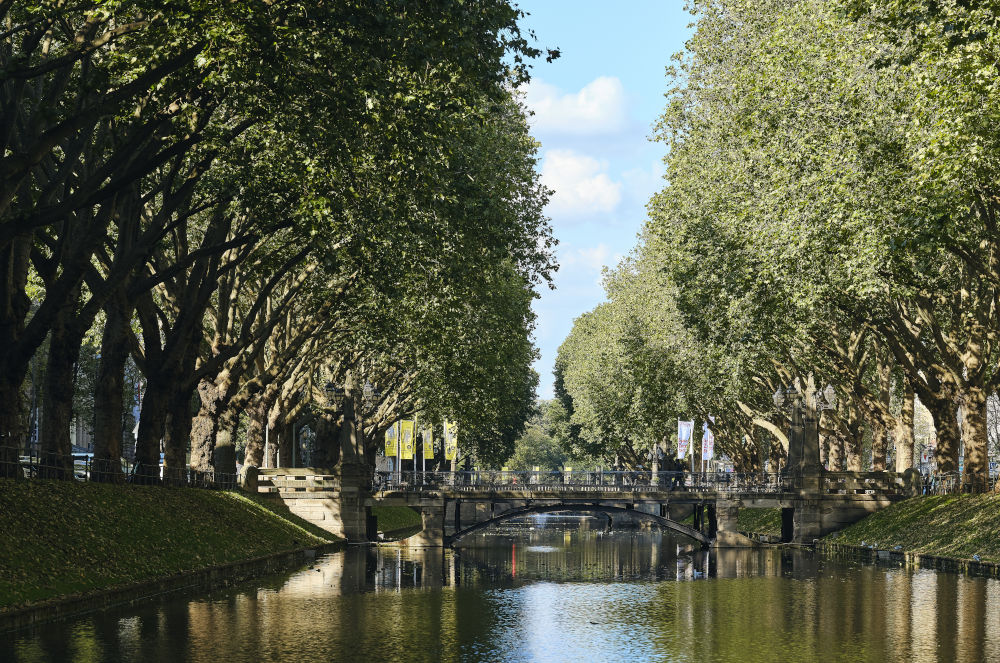
My thirst for art knows no bounds and so I set off to explore the K21 Museum, located on Ständehaus. This modern art exhibition features works by Ei Arakawa, Marina Abramovi, Robert Gober, Jeff Wall and more.
The most intriguing exhibit has to be ‘in orbit by Tomás Saraceno’, a room installation, which hovers 25 metres above ground level and consists of near-transparent steel nets beneath a glass dome and five air-filled spheres. Visitors are welcome to climb the nets and enter the spheres placed within the 2,500 square metre networks. The illusion for viewers on ground level means that the people above appear to be floating or walking on air. It is quite simply mesmerising.
After being surrounded by art and utterly absorbed for an extended period I was feeling rather peckish and headed for Heimwerk, a restaurant, located on Hafenstrasse. I ordered the first rate mushroom Schnitzel followed by the Kaiserschmarrn; a delicious sliced, caramelised, powder-sugared pancake with applesauce and accompanied by a chilled glass of Riesling, it was perfect. I raised my glass aloft to Düsseldorf, which is, quite simply, wunderbar.
Factbox
Flights from London Heathrow to Düsseldorf take approximately one hour and 20 minutes.
For more information on the featured accommodation, visit breidenbacherhof.com.
Photography (excluding accommodation) courtesy of Düsseldorf Tourismus.












